Zagori Cultural Landscape
By Lindsey
What is the Zagori Cultural Landscape?
The Zagori Cultural Landscape is a mountainous area in the north of Greece, which spans from north of Ioannina to close to the Albanian border.
The region is best known for Zagorohoria, which are stone villages that were once accessible only on foot via a system of trails and stone bridges. All together, there are 46 charming small villages. Each one has its own distinct character.
While people still hike from one village to the next, these days you can explore the area by car!
Disclosure: This article contains affiliate links. Making a purchase through an affiliate link will mean a small commission for this website. This will not affect your price.
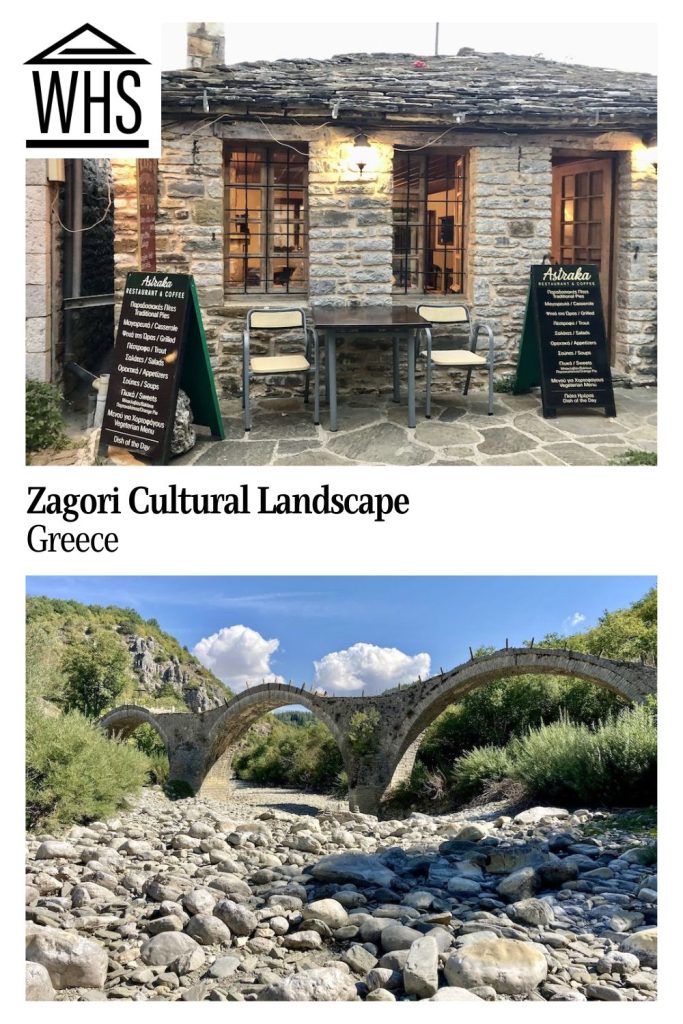
Why is Zagori Cultural Landscape a UNESCO World Heritage site?
These old-fashioned stone villages were added to the UNESCO World Heritage list because of their unique architecture and cultural characteristics.
The Zagorohoria tend to be organized around a central square that serves as a gathering place for the community. The bridges connecting the villages were likely built in the 19th century for pack horses moving goods between villages. The bridge and stone path network also helped to connect the village citizens, creating community across the remote mountainous region.
As Greece continues to modernize, UNESCO status can help landscapes like this maintain their unique cultural qualities while bringing tourists to the region.
I visited the Zagori in 2021, before the area was officially declared a UNESCO World Heritage site. I’m not sure if the UNESCO listing will bring more tourists to the area, but when I went, it still felt like a local secret!
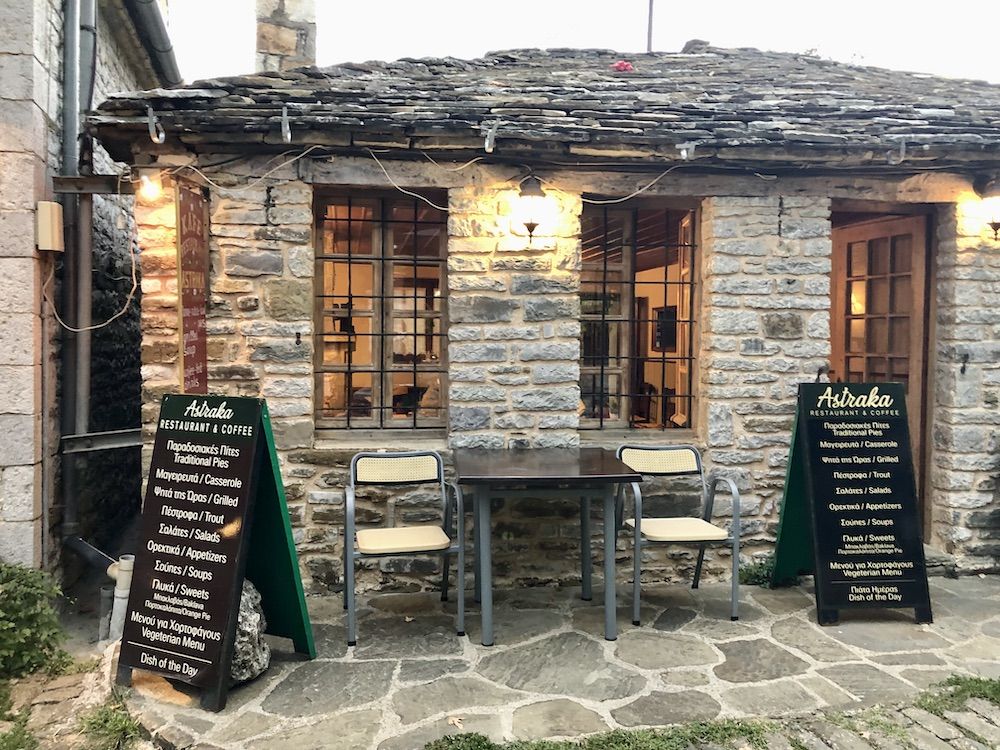
What can you expect on a visit to Zagori Cultural Landscape?
When I first read about the Zagori region, I was fascinated by the idea of the stone bridges and interlinked villages. I knew it would be pretty, and I imagined that the ancient cobblestones would prove tricky to walk on.
Both of these things turned out to be true. We plotted out a day trip to some of the Zagorohoria, and the drive was stunning. Every new bend in the road brought an incredible view of the surrounding mountains.
Picturesque villages like Monodendri and Megalo Papigo show the unique character of this region at its best. Strolling these towns on foot is the best way to take in the stone-built homes and traditional squares characteristic of the Zagori lifestyle. In Monodendri, the Byzantine-era Monastery of Ayia Paraskevi offers religious art, walls frescoes, and a lookout onto Vikos Gorge.
Megalo Papigo is for many the quintessential Zagori village. It’s small, with a maze of cobblestone alleys and a mix of residential homes and cute boutiques. We wished we had booked a room in a hotel here, so we didn’t have to leave!
You can see the top sights in Zagorohoria, Greece in a day, including a hike to a stunning viewpoint into Vikos Gorge, but you might want to linger longer and soak up the ambience.
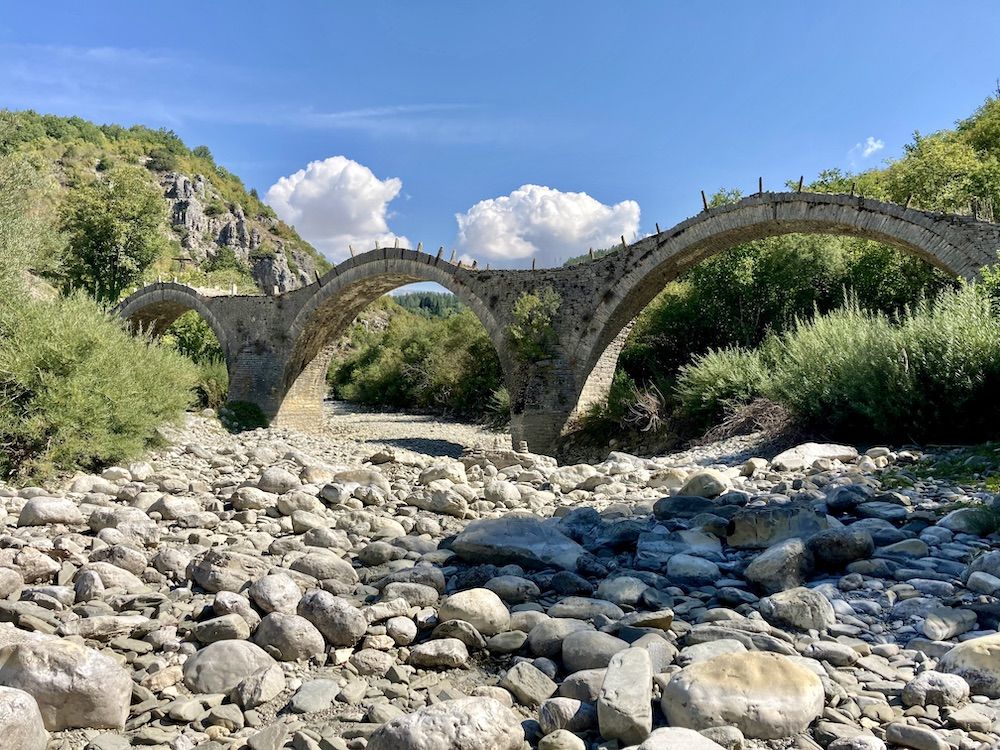
Is the Zagori Cultural Landscape worth visiting?
Yes! It was one of my favorite experiences in Greece. You can visit the Zagori on a day trip and get a feel for what makes the area so special. However, if you can stay overnight, you’ll have more time to explore. The accommodations map below is centered on Papigo, but you can zoom out to see options in other villages.
What sorts of travelers would like the Zagori Cultural Landscape?
I recommend a visit to the Zagori Cultural Landscape to active travelers. There are many beautiful hikes in the area, including the stunning Vikos Gorge.
It’s a perfect stop on a road trip through northern Greece and may be a good fit for families traveling with children – depending on the age and interest levels of your kids, of course!
Since the cobblestones are uneven, this is not a good activity for people with mobility issues.
If you’d like to hike some of the traditional cobbled paths and see some of the arched stone bridges, take a guided hike: a three-hour version or a six-hour version. Click on the images below for lots of other things to do in the area:
Tips for visiting the Zagorohoria
Get an early start. The road to the Zagorohoria has steep drop-offs and few guardrails. It isn’t something you want to be navigating in the dark.
Compare rental car prices here.
Wear good walking shoes. You’ll need them!
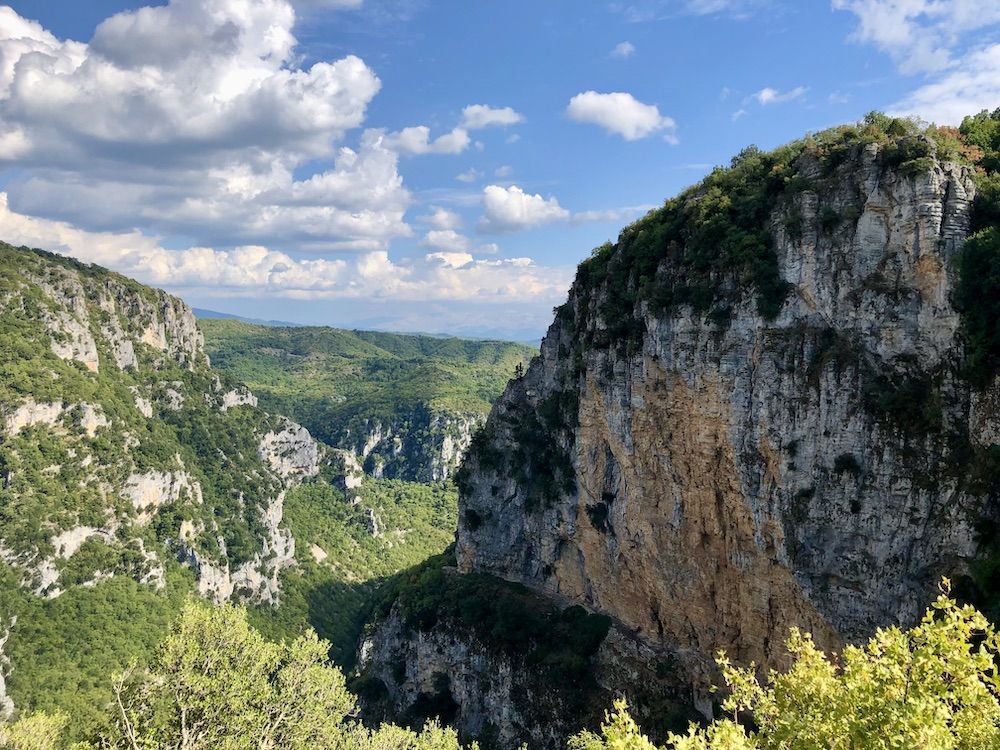
Bigger towns like Monodendri have restaurants and facilities. Smaller villages are residential with limited-to-no services. Keep this in mind as you’re driving around, because it can be tricky to find things like gas stations or bathrooms.
Corfu and its UNESCO-listed Old Town is just a short ferry ride from Ladochori. Take a look at the other Greek UNESCO sites while you make your plans.
Where is the Zagori Cultural Landscape?
These village are located in the Pindus Mountains in northern Greece.
Monodendri is one of the larger villages within the Zagori. It’s located around 40 kilometers (25 miles) north of the city of Ioannina, and a 45-60-minute drive from that city.
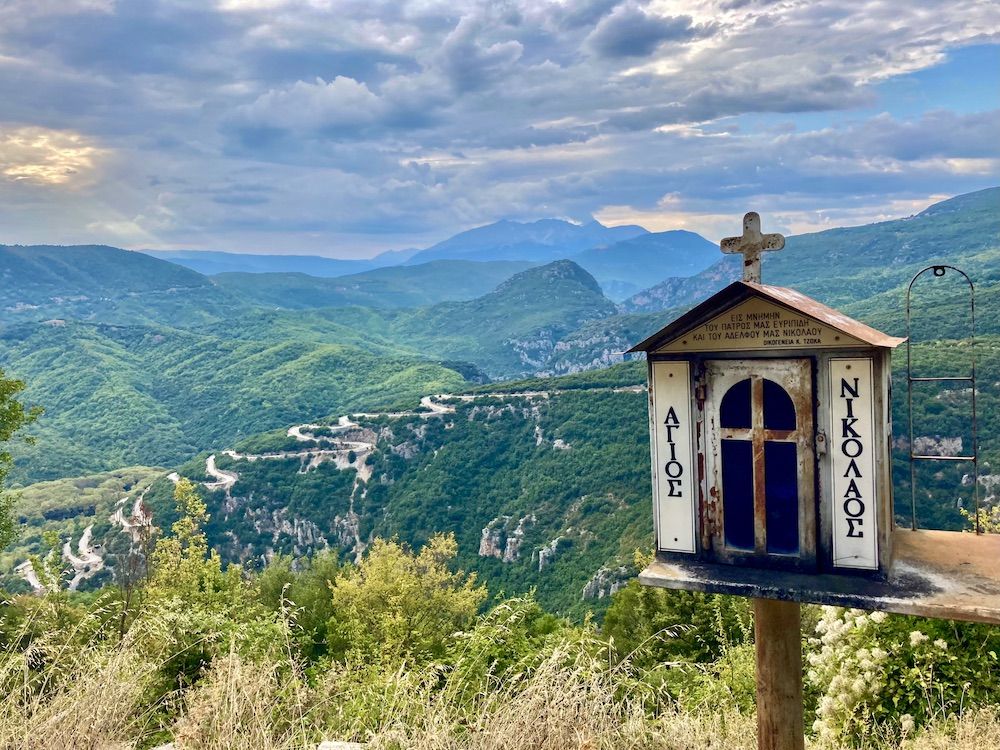
It’s possible to take a public bus from Ioannina to the Zagori; however, bus routes are limited and you’ll spend far more time waiting around. Research bus times in advance. If you don’t have a car, you’re better off joining a day tour.
Parking in the Zagori area is tricky. Larger towns like Monodendri tend to have dedicated parking areas on the outskirts of town. Smaller villages usually don’t have any parking. In this case, find a safe spot on the shoulder of the road to leave your car and explore the village on foot.
For more information about the Zagori Cultural Landscape, see the Greek Tourism Board’s official website.
Have you been to any of the Zagorohoria villages? If so, do you have any additional information or advice about this UNESCO World Heritage site? Please add your comments below!

